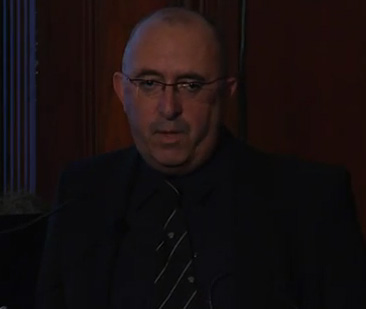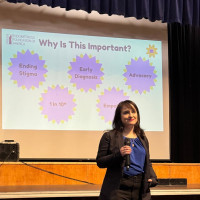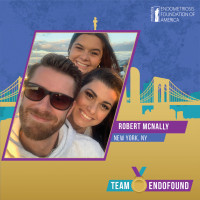Endometriosis Foundation of America
Medical Conference – 2012
Why Motion Pictures Were a Key for Excellency in Laproscopic Surgery
Antonio Setubal, MD (1)
Let’s talk a little bit about why motion pictures are a key of excellence in laparoscopic surgery. There is no sound, which could be very important in the next movie, but anyway, we will try to do it like in the old silent movies as we did before.
This is a laparoscopy. I am sure that when you look, most of the people will say “Oh…little bit at the uterosacral on the left side. It is not very good but there is nothing of deep endometriosis and the tubes are okay”. This is the left tube. Then you have the right tube. But when you tried to do like this, you know that the patient suffers lot pain, dyskesia, dyspareunia and dysmenorrhea. When we try to develop all the rectal vaginal septum as you see here, and you have the vagina already open, what are you going to get? Well, you are going to find this huge, big tumor that is in the vagina as you can see over there. It is there. This is the technique used in Europe that I learned. Basically what I do is monopolar and bipolar in order to remove all the lesions there are on the vessel part of the vagina of this poor lady. But first you have to develop the pararectal space on one side, the other side goes to the ___ space, open the rectal general ___, then you can open the vagina and find the tumor. This is only a part of the tumor because there is more to come. We still use the same technique. This is…the grasper that Harry Reich told me about and taught me to use a long time ago. I still use the same grasper. Then you get a hook and the bipolar. Remember that Harry? This is the grasper you told me about.
We are still working on this tumor. As you can see it is a huge tumor and we are not finished yet. This is the rectal cervix part of the tumor. At the end you are going to find the tumor is gone, the vagina, this is the rectum. This is the parietal fossa right here and then you can start suturing. We are going to skip showing the suture and go back to, what is for me, very important.
I am talking about the camera in surgery. The camera in surgery is a surgical tool right now. It is as important as your bipolar, as your grasper, as your scissors are. But actually it is very important as a teaching tool. You can actually do a live surgery like at the last ___ for AAGL and hit 45 countries on five continents. You have to think that the camera is a surgical tool and if you have a surgical tool like it has got to be HD. If you do not have HD it will be impossible to have that quality. In order to do the quality of surgery an HD camera is equal to any laparoscopic surgical devices as I told you before, the bipolar, the scissors and then you have the camera. The camera, remember, it is a tool for your operations.
This is Harry Reich doing an operation before the camera. This is going to be very difficult. Remember this is in 1989 we have a lot of technology going on. If you look, Nezhat said in 1992 that video laparoscopy will replace laparotomy. Well it is still not like this because at that time he and I were using this type of camera. Actually, it took a long time, a long time in order to get a more feasible camera so we can operate. As you can see it took more like ten years to get this quality of picture so we could perform a surgery of excellence. But we still have a lot of drawbacks in time because we think there are a lot of things that developed in the last 20 years, more than cameras, I mean like iPhones, iPads. Everything comes more and more quickly, so why not cameras?
When we talk about cameras, if you remember, I can remind you, Sony developed this 5K projector more than five years ago and now you have the 4K red cameras already. And the future, I am sure that Steven Palter will talk about that. There is a lot of experience right now coming on the 15K but can you imagine if you can adapt this to your laparoscopy, your laparoscope is going to be ahead so you can see more and more.
As I told you before a camera is a teaching tool that took more than one century ago only less than two years in order to become a very important tool. You know the story that Edison was trying to develop cinema but was not able to do anything more than kinetoscope and then, well I will skip the question about the motion pictures but I love to call this motion pictures because all you have got: DVD, video, digital images and motion pictures is the right word for it.
But really, the guys who discovered cinema were the brothers Lumière back in 1895. If I can remind you of the first projection was on the 28th of December, 1895. It was in a small café in Boulevard des Capucine. It does not exist anymore in Paris. There were a lot of people; 35 people in the session, eight reels, very important some of them. As you can see, “L’Arrive d’un train en gare de la Ciotat”. it is a very important film right now because Martin Scorsese put it in Hugo . So, just to remind you of the history this is the actual original film of the Lumière brothers that you saw on the Martin Scorsese film just a couple of months ago. I am sure that most of the people here saw Hugo, a beautiful film coming from this guy. They invented cinema. This one was one of the first pictures they developed.
So, motion pictures and modern endoscopy. I remind you that it started two years after the invention of cinema. This is because of the mind and the idea of a surgeon called Eugène-Louis Doyen who was the first surgeon to do any movies. This is Eugène -Louis Doyen and this is one of his first movies. I will come back to that. This movie belongs to the Portuguese National Film archive. Just to remind you this is an orchidectomy and this is in real time. Orchidectomies - if you think that we take four or five hours in order to do difficult cases on endometriosis, you are going to see how long it takes in order to do the orchidectomy. Actually, we are very lucky because we found 14 films of Eugène-Louis Doyen in Lisbon and there are only two in Paris and one in the Cinematique du Quebec. That is the nurse at the time. You see in one minute and 30 seconds he has done the surgery and I will tell you why in a couple of minutes. He was a pioneer, teaching surgery by images in motion. He was born in Reims in 1859 and he died in Paris in 1916. He was a surgeon. He had a lot of publications. He was a very fast surgeon as you can see and he designed several devices for surgery. If you are doing open surgery you know what I am saying because you still have the name Doyen on a lot of devices that you use for open surgery. Cinema is a teaching tool. He was very clever because when the brothers Lumière invented the cinema he took the cameraman Clément Maurice and then he went to the director of photography, Ambroise Parnaland and stole his camera operator Auguste Baron. But it was not enough. He did a lot of adaptation of the camera so one reel can fit one surgery and one movie. So he has got to go fast. He has to construct a movie studio to be an O/R like you saw for those who saw the movie, in Hugo, you saw the type of studios at that time. There was no electricity so you can imagine how things were done at the time.
So it was less operative time for surgery, less trauma, less pain and less infection like we have today for laparoscopic surgery. Surgery was a fluid “plot” with no cuts, no editing, no cleavage between time and space. That was something that he invented for the cinema only in 1914.
The first three movies were in 1898. A new operating table, it was abdominal hysterectomy. We see the operating table that he developed. This is the hysterectomy film that unfortunately disappeared in a fire in Paris back at the studios in 1930. This is one of the craniotomies film that I am lucky to have in my collection, at least six of them.
This is in French and is an important statement from Eugène-Louis Doyen “…in less than a minute you will make a thousand people understand which each of you at the conference will only be able to teach to a few number of students if they are at your operating theatre”. What is clear if you are doing a live surgery in laparoscopy is that you are going to show it to everybody all across the planet.
The other statement came from the Les Nouvelles Scientifique et Photographique. It is from the year 1899 and he states that, “When I first saw on the screen of the cinema one of my operations, I realized how much I ignored myself”. That is what we do right now. “I corrected, I improved, I simplified; so that the cinema allowed me to improve my surgical technique…I was happy to be able to criticize myself and my own operations of the previous days.” This was done more than 100 years ago and that is exactly what we are doing with laparoscopy. It does not matter if it was for…it was forbidden, it was criticized but this is an old story. Harry Reich knows a lot of that so we are going quickly in this part. Finally he was able to present against the Acadèmie de Medicine in France to present the films in France in October 1898 but it first was presented in the British Medical Society in Edinburgh.
Some guys at the operating theatre, at the time you can see some very important surgeons, Mario ___, some guy over there and if you look over there you can see O/R1A. This means that those are the eyes we had with the camera. When we get back to the camera and we get back to the old movies you can show people how to operate, those were the old movies. I am sure that Steven Palter will talk about the new concepts of technology but right now but I think it is important to – almost finished my talk –present this. It is not a cadaver as you are going to see very, very soon. This is the anesthesiologist by the way. He is using a very high tech tool. The patient does not like it very much so he is starting to breathe a little bit more. He is trying to ___ the cyst. But he was fighting against time because it was only one reel and he had to go fast. For some reason he was not able to do it. At the end he decided not to ___ the cyst as you are going to see. Probably the guys will tell him they are running out of film. Can you see the lights? Can you see everything is so clear and there is no electricity – bomb – can you see that the patient did not like very much so just a little bit more anesthesiology, and a little more because the patient was waking up. He knows he has to be faster. So let’s see if the hemostasis is correct. He has got to get some bleeder over there. There is a bleeder so clamp it. Now they are going to close. In some places we still use these types of stitches.
In conclusion, I have one conclusion, and this is from David W. Griffith, he is considered to be the father of modern cinema. His film “Beyond the Birth of a Nation” back in 1914 here in the U.S., and then of course we have the work of Sergei Eisenstein in Russia in 1928, but he states, and this is my conclusion, “The task I am trying to achieve is above all to make you see”. It is exactly what we are trying to do in surgery.
Thank you very much.










